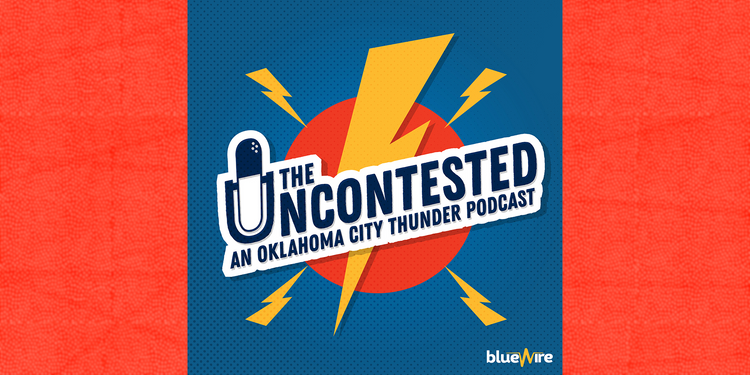Andre Roberson Injury Q&A with Dr. Adam Huskerson
When an NBA player goes down with an injury, that player’s fan base has to go through a process: denial, anger, bargaining, depression, acceptance, and pretending to know everything about whatever the injury is because of what Google said. The first five things are more than acceptable, but why should the last be?
In light of Andre Roberson’s injury I decided to bring in an expert on this topic, Dr. Adam Huskerson. Dr. Huskerson is board-certified by the American Board of Family Medicine and holds a Certificate of Added Qualification in Sports Medicine. He was kind enough to lend his expertise to us in the form of a Q&A. Now you don’t have to pretend you know everything about Dre’s injury.
…
Did Andre Roberson return too early from his earlier patellar tendon injury?
Allow me first to state that I have no inside knowledge of Andre’s particular pre-existing injuries, so some assumptions are made in breaking this down. One can assume that he has had some degree of patellar tendinitis, or jumper’s knee, that has been bothering him throughout the season. This simply means that portions of his patellar tendon have undergone degenerative change where the ordinary, strong patellar tendon fibers are replaced by weaker, more disorganized fibers.
This is not uncommon in athletes of sports with a lot of jumping, so I would imagine he is not the only person in the Thunder locker room with some degree of this issue. That being said, in most cases, the risk of rupture is extremely low and generally pain is a reasonable guide as to when it is appropriate to return to competition. I think it goes without saying that Roberson appeared to be playing at an extremely high level since he returned and didn’t show any obvious discomfort on the court.
I guess I could have just said “no” to your question.
Since he had a vulnerable patellar tendon, does that mean he was inevitably going to have this injury?
He may have been more predisposed to this injury than someone who has a pristine patellar tendon, but the risk was still pretty low, even for him.
How do they repair the patellar tendon?
Typically, the surgeon will drill three holes in the lower part of the knee cap and tie sutures through the holes, connecting them to patellar tendon and pulling it back upward toward the bottom of the knee cap.
What is the recovery like and how long will it take?
Typically the patient is placed in a knee immobilizer to keep their knee straight for a few weeks, followed by gradually increasing weight-bearing. Then, the surgeon gradually allows increased range of motion and strengthening under the supervision of a physical therapist.
One can expect the tendon to reach near full-strength around six months after surgery, however, sometimes the recovery is longer simply due to loss of strength, particularly in the quadriceps muscles.
In your professional opinion, how sad should we feel for Andre?
Of course we should be devastated for the guy! 2018 was becoming the year of Andre appreciation. Even our wonderful local sports radio people finally realized that he’s actually an incredibly useful basketball player. I’m devastated, but hopeful that he will make a strong comeback.
…
Dr. Huskerson specializes in orthopedics at Stillwater Medical. H is board-certified by the American Board of Family Medicine and holds a Certificate of Added Qualification in Sports Medicine. He is a member of the American Board of Family Medicine, American Medical Association, American College of Sports Medicine and American Medical Society for Sports Medicine. He is also one of the coolest people you will meet.

